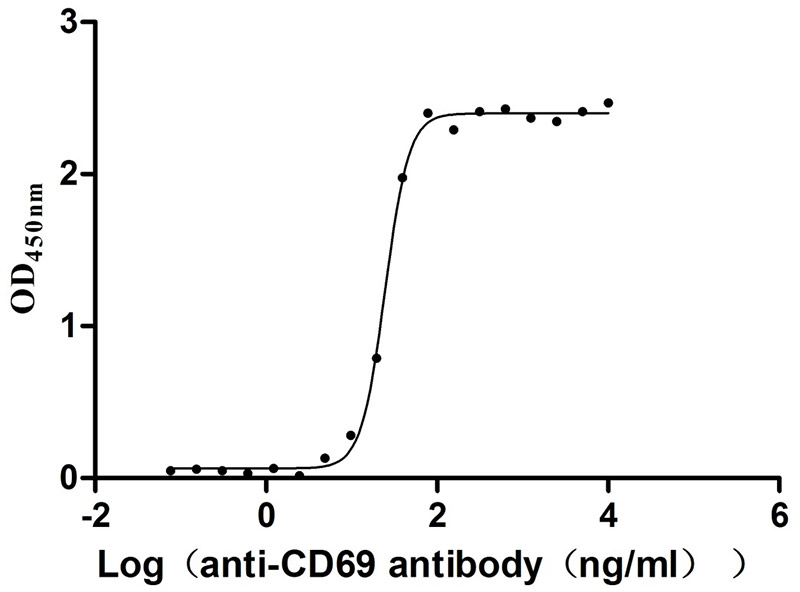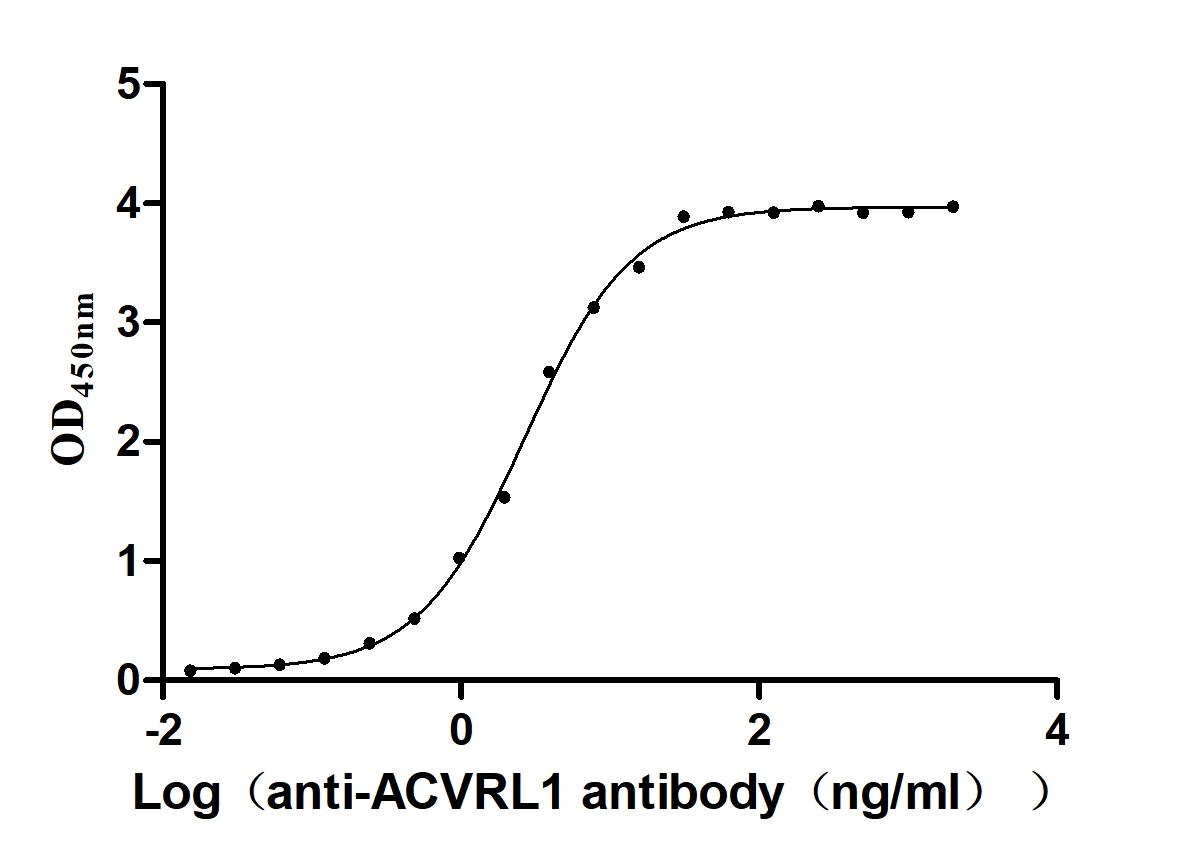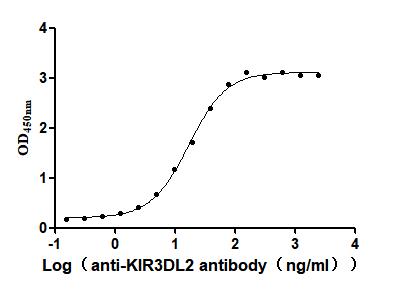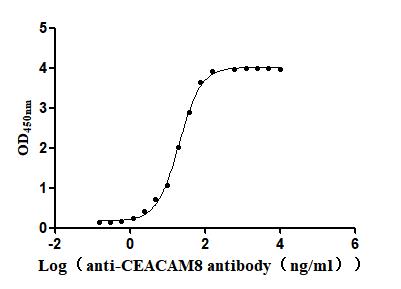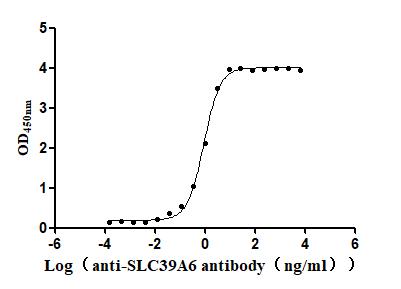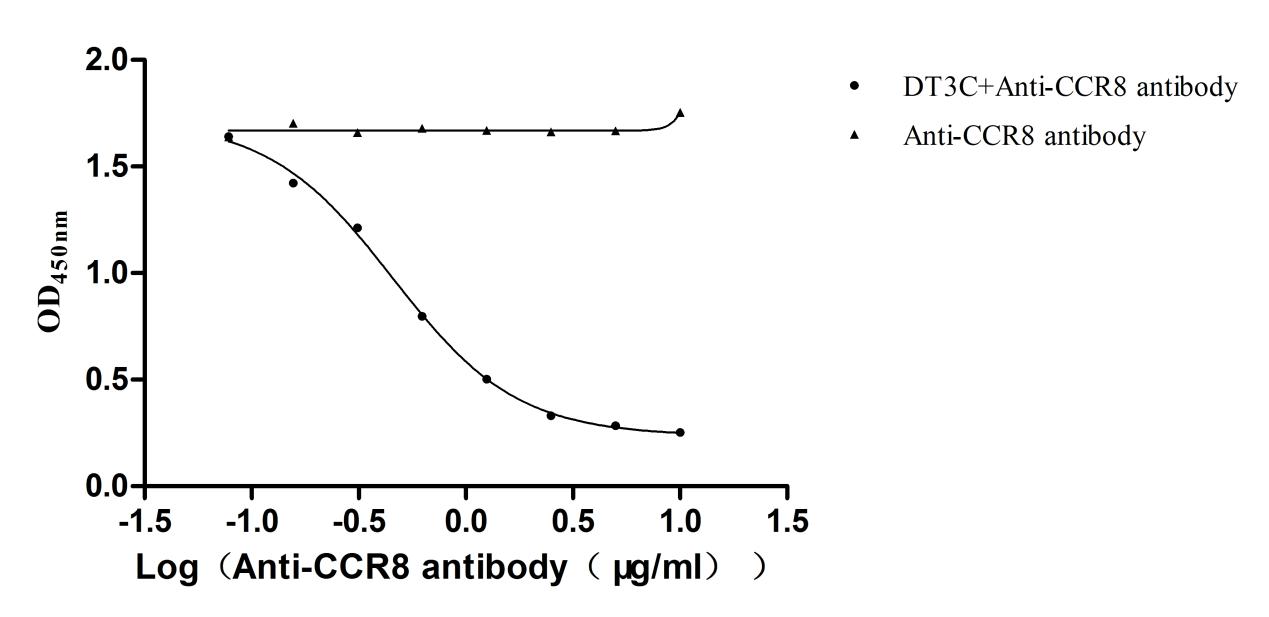Recombinant cGMP-dependent protein kinase egl-4 (egl-4), partial
-
中文名称:秀丽隐杆线虫egl-4重组蛋白
-
货号:CSB-YP530456CXY
-
规格:
-
来源:Yeast
-
其他:
-
中文名称:秀丽隐杆线虫egl-4重组蛋白
-
货号:CSB-EP530456CXY
-
规格:
-
来源:E.coli
-
其他:
-
中文名称:秀丽隐杆线虫egl-4重组蛋白
-
货号:CSB-EP530456CXY-B
-
规格:
-
来源:E.coli
-
共轭:Avi-tag Biotinylated
E. coli biotin ligase (BirA) is highly specific in covalently attaching biotin to the 15 amino acid AviTag peptide. This recombinant protein was biotinylated in vivo by AviTag-BirA technology, which method is BriA catalyzes amide linkage between the biotin and the specific lysine of the AviTag.
-
其他:
-
中文名称:秀丽隐杆线虫egl-4重组蛋白
-
货号:CSB-BP530456CXY
-
规格:
-
来源:Baculovirus
-
其他:
-
中文名称:秀丽隐杆线虫egl-4重组蛋白
-
货号:CSB-MP530456CXY
-
规格:
-
来源:Mammalian cell
-
其他:
产品详情
-
纯度:>85% (SDS-PAGE)
-
基因名:egl-4
-
Uniprot No.:
-
别名:egl-4; cgk-1; odr-9; F55A8.2cGMP-dependent protein kinase egl-4; EC 2.7.11.12; Egg-laying defective protein 4
-
种属:Caenorhabditis elegans
-
蛋白长度:Partial
-
蛋白标签:Tag type will be determined during the manufacturing process.
The tag type will be determined during production process. If you have specified tag type, please tell us and we will develop the specified tag preferentially. -
产品提供形式:Lyophilized powder
Note: We will preferentially ship the format that we have in stock, however, if you have any special requirement for the format, please remark your requirement when placing the order, we will prepare according to your demand. -
复溶:We recommend that this vial be briefly centrifuged prior to opening to bring the contents to the bottom. Please reconstitute protein in deionized sterile water to a concentration of 0.1-1.0 mg/mL.We recommend to add 5-50% of glycerol (final concentration) and aliquot for long-term storage at -20℃/-80℃. Our default final concentration of glycerol is 50%. Customers could use it as reference.
-
储存条件:Store at -20°C/-80°C upon receipt, aliquoting is necessary for mutiple use. Avoid repeated freeze-thaw cycles.
-
保质期:The shelf life is related to many factors, storage state, buffer ingredients, storage temperature and the stability of the protein itself.
Generally, the shelf life of liquid form is 6 months at -20°C/-80°C. The shelf life of lyophilized form is 12 months at -20°C/-80°C. -
货期:Delivery time may differ from different purchasing way or location, please kindly consult your local distributors for specific delivery time.Note: All of our proteins are default shipped with normal blue ice packs, if you request to ship with dry ice, please communicate with us in advance and extra fees will be charged.
-
注意事项:Repeated freezing and thawing is not recommended. Store working aliquots at 4°C for up to one week.
-
Datasheet :Please contact us to get it.
靶点详情
-
功能:Promotes chemoreceptor gene expression in response to increased cGMP levels by antagonizing the gene repression functions of the class II HDAC hda-4 and the mef-2 transcription factor. Regulates gene expression via recruitment of a histone deacetylase complex containing hda-2, saeg-1 and saeg-2. Represses body size and lifespan through the dbl-1 and insulin pathways, respectively. May also signal through daf-3 and/or daf-5. Role in egg-laying, dauer formation and motility. Regulates behavioral responses to various chemosensory stimuli in sensory neurons. Required for the initiation of long term adaptation to prolonged odor exposure which results in a decrease in odor seeking behavior. May regulate this process by phosphorylating tax-2, a subunit of cyclic nucleotide-gated channel tax-2/tax-4. In ASH sensory neurons, negatively regulates avoidance behavior to some bitter tastants, such as quinine, probably by phosphorylating rgs-2 and rgs-3 which are 2 regulator of G-protein signaling proteins. In AWB sensory neurons, involved in avoidance behavior to some repellent odors. In ASE left (ASEL) sensory neuron, involved in the sensing of environmental alkalinity downstream of receptor-type guanylate cyclase gcy-14. In sensory neurons, involved in the signaling pathway downstream of insulin, TGF-beta and receptor-type guanylate cyclase responsible for inducing quiescence after food intake. Might play a role in aversive olfactory learning in AWC neurons when an odor is associated with food deprivation, depending on the ins-1/age-1 signal from the AIA to the AWC neurons. Probably by regulating neuronal transmission downstream of lin-3 and receptor lin-23 and phospholipase plc-3 in ALA neurons, involved in the decrease in locomotion during the quiescent state that precedes each larval molt.
-
基因功能参考文献:
- we provide evidence that the C. elegans transmembrane guanylyl cyclase ODR-1 functions in a non-cell-autonomous manner to provide cGMP to regulate EGL-4 function in ASH PMID: 27459302
- Nuclear PKG localization is necessary in the AWB neurons to mediate avoidance in Caenorhabditis elegans. PMID: 23954825
- activated EGL-4 dampens quinine sensitivity via phosphorylation and activation of the regulator of G protein signaling (RGS) proteins RGS-2 and RGS-3, which in turn downregulate Galpha signaling and behavioral sensitivity. PMID: 23874221
- odor-induced fluctuations in cGMP levels and this fluctuation may be responsible for sending EGL-4 into the AWC nucleus. PMID: 22319638
- an effector of cGMP signalling, a cGMP-dependent protein kinase, EGL-4, also modifies bbs mutant defects PMID: 22022287
- active EGL-4/PKG acts in the nucleus via a conserved Class I histone deacetylase complex to regulate gene expression pertinent to behavioral and physiological responses to cGMP PMID: 21573134
- EGL-4 protein kinase acts as a sensor that integrates odor signaling over time, and its nuclear translocation is an instructive switch that allows the animal to ignore persistent odors. PMID: 20220099
- The PKG homolog egl-4 promotes quiescence by acting at two levels: in the sensory neurons and also downstream of command interneurons. PMID: 20105303
- Cyclic GMP-dependent protein kinase EGL-4 controls body size and lifespan in C elegans PMID: 12571101
- Mutants in egl-4 showed abnormal thermal responses, suggesting that these genes are involved in warm avoidance. PMID: 12819265
- EGL-4 signaling pathway controls body size in C. elegans. PMID: 15330854
- A novel dominant mutation in the C. elegans egl-4 cGMP-dependent protein kinase (PKG) shows that this mutation causes increased normal gene activity although it is associated with a reduced EGL-4 protein level. PMID: 16547093
显示更多
收起更多
-
亚细胞定位:Cytoplasm. Nucleus.
-
蛋白家族:Protein kinase superfamily, AGC Ser/Thr protein kinase family, cGMP subfamily
-
组织特异性:Expressed in AWC sensory neurons (at protein level). Mainly expressed in head neurons, hypodermis, intestine and body wall muscles. L2 and L3 larvae show extensive expression, lower levels are observed in L4 larvae, later embryos and adults. Isoform c is
-
数据库链接:
STRING: 6239.F55A8.2a.1
UniGene: Cel.38682
Most popular with customers
-
Recombinant Human CD226 antigen (CD226), partial (Active)
Express system: Mammalian cell
Species: Homo sapiens (Human)
-
Recombinant Human Dickkopf-related protein 1 (DKK1) (Active)
Express system: Mammalian cell
Species: Homo sapiens (Human)
-
Recombinant Human Early activation antigen CD69 (CD69), partial (Active)
Express system: Mammalian cell
Species: Homo sapiens (Human)
-
Recombinant Human Serine/threonine-protein kinase receptor R3 (ACVRL1), partial (Active)
Express system: Baculovirus
Species: Homo sapiens (Human)
-
Recombinant Human Killer cell immunoglobulin-like receptor 3DL2 (KIR3DL2), partial (Active)
Express system: Mammalian cell
Species: Homo sapiens (Human)
-
Recombinant Human Carcinoembryonic antigen-related cell adhesion molecule 8(CEACAM8) (Active)
Express system: Mammalian cell
Species: Homo sapiens (Human)
-
Recombinant Macaca fascicularis Zinc transporter ZIP6 isoform X1(SLC39A6),partial (Active)
Express system: Baculovirus
Species: Macaca fascicularis (Crab-eating macaque) (Cynomolgus monkey)
-
Recombinant DT3C (Diphtheria toxin & spg 3C domain) for Antibody Internalization Assay (Active)
Express system: E.coli
Species: N/A


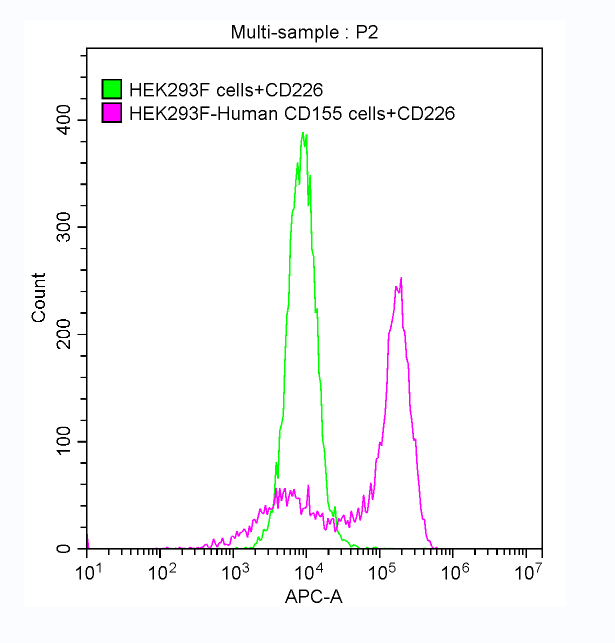
-AC1.jpg)
